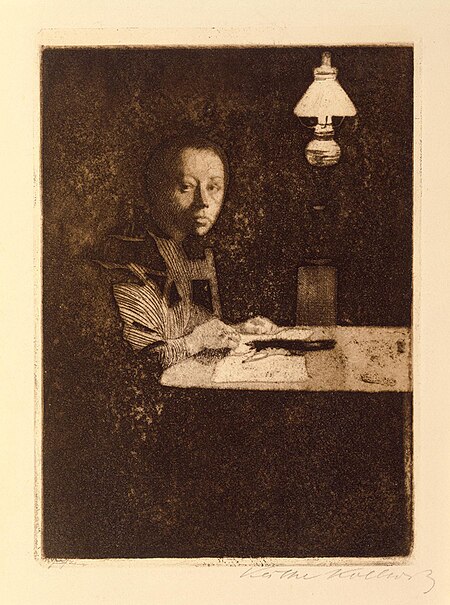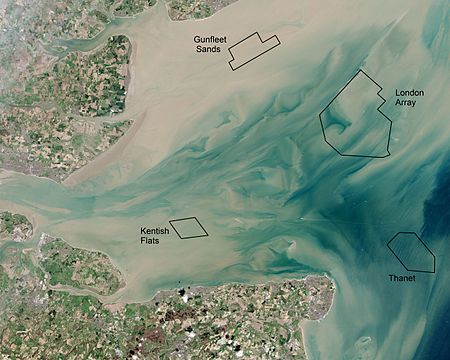Farewell Discourse
|
Read other articles:

This article is about the town in Oxfordshire. For other uses, see Burford (disambiguation). Town in Oxfordshire, England Human settlement in EnglandBurfordLooking north along 'The Hill'BurfordLocation within OxfordshirePopulation1,422 (parish, 2011 Census)OS grid referenceSP2512Civil parishBurfordDistrictWest OxfordshireShire countyOxfordshireRegionSouth EastCountryEnglandSovereign stateUnited KingdomPost townBurfordPostcode districtOX18Dialling code01993Polic…

Provincia di Luccaprovincia Provincia di Lucca – VedutaPalazzo Ducale, sede della Provincia. LocalizzazioneStato Italia Regione Toscana AmministrazioneCapoluogo Lucca PresidenteLuca Menesini (PD) dal 21-9-2015 TerritorioCoordinatedel capoluogo43°51′N 10°31′E / 43.85°N 10.516667°E43.85; 10.516667 (Provincia di Lucca)Coordinate: 43°51′N 10°31′E / 43.85°N 10.516667°E43.85; 10.516667 (Provincia di Lucca) Altitudine19 (Lucca…

Handball League AustraliaFounded2016No. of teams4Country AustraliaConfederationOCHFMost recentchampion(s)St Kilda HBC (2017)Most titlesSydney University &St Kilda HBC (1 title)Level on pyramid1Official websiteWebsite 2020 Handball League Australia The Handball League Australia (HLA) was an Australian-based championship for handball run by Australian Handball Federation. The principal idea was to play round robin games in each capital city. There are four teams representing four states.&…

Swiss Basketball League (SBL) Datos generalesDeporte BaloncestoSede Suiza SuizaContinente EuropaEquipos participantes 9Datos históricosFundación 2001Datos estadísticosCampeón actual Fribourg OlympicOtros datosSitio web oficial swiss.basketball[editar datos en Wikidata] La Liga Nacional de Baloncesto de Suiza (en francés: Ligue Nationale de Basket-Ball y conocida oficialmente como Swiss Basketball League) es la máxima competición de baloncesto de Suiza. La temporada comienza…

PS Shark TanjungpinangNama lengkapPerkumpulan Sepakbola Shark TanjungpinangJulukanThe Blue SharksBerdiri2013; 11 tahun lalu (2013)StadionStadion Antam KijangKota Tanjungpinang, Kepulauan Riau(Kapasitas: 5.000)PemilikAde Noverwin[1]ManajerZulkarnain[2]LigaLiga 3 Kepulauan Riau2023Babak grup Kostum kandang Kostum tandang Perkumpulan Sepakbola Shark (atau dikenal juga PS Shark Tanjungpinang) adalah klub sepak bola Indonesia yang bermarkas di Stadion Antam Kijang, Kota Tanjungpi…

New Zealand basketball player Pero CameronCameron in 2019Personal informationBorn (1974-06-05) 5 June 1974 (age 49)Tokoroa, New ZealandListed height200 cm (6 ft 7 in)Listed weight130 kg (287 lb)Career informationHigh schoolWhangarei Boys'(Whangārei, New Zealand)Playing career1992–2010PositionPower forwardCoaching career2010–presentCareer historyAs player:1992–1993Waikato Warriors1994–2000Auckland Stars/Rebels1995–1996Ipoh Red Eagles1999–2003Chester Jets…
2020年夏季奥林匹克运动会波兰代表團波兰国旗IOC編碼POLNOC波蘭奧林匹克委員會網站olimpijski.pl(英文)(波兰文)2020年夏季奥林匹克运动会(東京)2021年7月23日至8月8日(受2019冠状病毒病疫情影响推迟,但仍保留原定名称)運動員206參賽項目24个大项旗手开幕式:帕维尔·科热尼奥夫斯基(游泳)和马娅·沃什乔夫斯卡(自行车)[1]闭幕式:卡罗利娜·纳亚(皮划艇)[2…

German artist (1867–1945) Käthe KollwitzKäthe Kollwitz, 1927BornKäthe Schmidt(1867-07-08)8 July 1867Königsberg, Prussia, North German ConfederationDied22 April 1945(1945-04-22) (aged 77)Moritzburg, Saxony, Nazi GermanyResting placeZentralfriedhof FriedrichsfeldeNationalityGermanMovementExpressionismSpouseKarl KollwitzChildren2 (including Hans)RelativesConrad Schmidt (brother) Johanna Hofer (niece) Maria Matray (niece)[2]AwardsPour Le Mérite 1929[1] Käthe Kollwitz (Ge…

US–USSR spaceflight capability rivalry This article is about the Cold War rivalry between the United States and the Soviet Union. For various space races, see List of space races. For other uses of the term, see Space Race (disambiguation). For a chronological guide, see Timeline of the Space Race. Clockwise, from top left: Model of the Sputnik 1 satellite; Apollo 11 astronaut Buzz Aldrin on the Moon; US Space Shuttle Atlantis docked to the Soviet Mir Earth orbital space station; US and Soviet…

زم الفضائي النوع خيال علمي، ومسلسل كوميدي [لغات أخرى]، وأدب الرعب إخراج ستيف راسيل البلد الولايات المتحدة[1] لغة العمل الإنجليزية عدد المواسم 2 عدد الحلقات 27 الإنتاج مدة العرض 22 دقيقة الموزع هولو الإصدار القناة نيكلوديون بث لأو…

واحات السيليكون للمناطق التكنولوجيةالشعارمعلومات عامةالبلد مصر التأسيس 2016 النوع شركة مساهمة حكوميةالمقر الرئيسي القرية الذكية موقع الويب siliconwaha.com… (العربية) المنظومة الاقتصاديةالنشاطات تكنولوجيا المعلومات والاتصالاتأهم الشخصياتالمالك القائمة .. هيئة المجتمعات الع�…

PaponMahanta at the Coke Studio Season 3 launchBackground informationBirth nameAngaraag MahantaAlso known asPaponBorn (1975-11-24) 24 November 1975 (age 48)Nagaon, Assam, IndiaGenresElectro fusionIndian classical musicPopIndian folk musicOccupation(s)Singer, composerInstrument(s)GuitarYears active1998–presentLabelsMDR Records, Times Music, T-Series, Sony MusicMusical artist Angaraag Mahanta (born 24 November 1975), known by his stagename Papon, is an Indian playback singer and composer fr…

Japanese telecommunications operator For other uses, see KDDI (disambiguation). This article needs additional citations for verification. Please help improve this article by adding citations to reliable sources. Unsourced material may be challenged and removed.Find sources: KDDI – news · newspapers · books · scholar · JSTOR (May 2022) (Learn how and when to remove this message) KDDI CorporationHeadquarters in Iidabashi, Chiyoda, TokyoNative nameKDDI株式…

Building in New York City Royal ExchangeAlternative namesOld Royal Exchange, Merchants ExchangeGeneral informationLocationNew York City, New York, U.S.Estimated completion1675Renovated1752Demolished1799 The Royal Exchange building in New York City, later known as the Old Royal Exchange and the Merchants Exchange,[a] was a covered marketplace located near the foot of Broad Street, near its intersection with Water Street.[1] Originally a one-story building in 1675, it was rebuilt w…

Boston Road is Springfield, Massachusetts's principal commercial and retail corridor, located on the eastern edge of the city.[1] The Boston Road neighborhood, historically known as Springfield Plain,[2] is named for being a major waypoint on the Boston Post Road system. Neighborhood Boston Road remains a commercial stronghold, home to the Eastfield Mall, various big-box stores, and a movie theater. Springfield city parks, including Five Mile Pond and Loon Pond, provide places to…

List of largest and notable offshore wind farms This article is about offshore wind farms. For onshore wind farms, see List of onshore wind farms. For more complete lists, see Lists of offshore wind farms. Four offshore wind farms are in the Thames Estuary area: Kentish Flats, Gunfleet Sands, Thanet and London Array. The latter was largest in the world. Offshore wind farm locations. Locations in gray are under construction This article lists the largest offshore wind farms that are currently ope…

CTV 2 station in Barrie, Ontario This article needs additional citations for verification. Please help improve this article by adding citations to reliable sources. Unsourced material may be challenged and removed.Find sources: CKVR-DT – news · newspapers · books · scholar · JSTOR (January 2019) (Learn how and when to remove this message) CKVR-DTBarrie–Toronto, OntarioCanadaCityBarrie, OntarioChannelsDigital: 9 (VHF)Virtual: 3BrandingCTV 2 Barrie or CTV…

Balestrieri della città di Gubbio in Piazza Grande Il Palio della Balestra è una manifestazione storica che si disputa ininterrottamente dal XV secolo, tra le città di Sansepolcro e Gubbio Indice 1 Il Palio della Balestra 1.1 Storia del Palio della Balestra a Gubbio 1.2 Storia del Palio della Balestra a Sansepolcro 1.3 Poesia 2 Albo d'Oro dal 1950 3 Programma nel 2023 3.1 A Gubbio 3.2 A Sansepolcro 4 Torneo BAI (Balestra Antica all'Italiana) 5 Personaggi legati al Palio della Balestra 6 Note …

Simbolo alchemico del sale Il sale in alchimia rappresenta il sostrato materiale che, insieme allo zolfo e al mercurio, compone i diversi aspetti e qualità degli elementi.[1] Indice 1 Storia 2 Proprietà alchemiche 3 Note 4 Voci correlate 5 Altri progetti 6 Collegamenti esterni Storia Cristalli di sale.[2] Di fondamentale importanza per la capacità di conservazione del cibo, il sale per migliaia di anni fu per gli esseri umani un fattore di sviluppo della civiltà, consentendo …

У этого топонима есть и другие значения, см. Менчиково. ДеревняМенчиково 52°38′12″ с. ш. 36°44′40″ в. д.HGЯO Страна Россия Субъект Федерации Орловская область Муниципальный район Покровский Сельское поселение Даниловское История и география Высота центра 213 м Часо…






